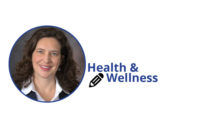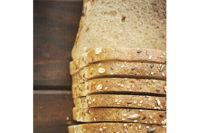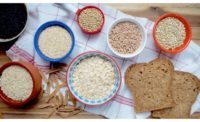Bread and bakery products made with vitamin D yeast also are good sources of this essential vitamin. But while enriched grains must be fortified with thiamine, niacin, riboflavin, folic acid and iron, fortification with vitamin D (and calcium) is optional.
Long known for its role in preventing or treating rickets, osteomalacia (softening of the bones) and osteoporosis, vitamin D also may be important in preventing or treating cancer, multiple sclerosis (MS), hypertension, glucose intolerance, diabetes and other medical conditions. Unfortunately, most of the studies have come from animal experiments, in vitro (test tube) or from epidemiological (population) studies. We need many clinical trials before making claims about the value of vitamin D for diseases other than those related to bone.
In addition, a report released in 2010 by the Institute of Medicine (IOM) stated that the majority of Americans have sufficient levels of vitamin D as measured by 25-hydroxyvitamin D levels, which drew a lot of criticism from some in the medical community. The medical community believes that many Americans don’t get enough vitamin D because of reduced milk intake (which is fortified), limited sun exposure, use of sunscreen, aging and obesity. According to the IOM, 4,000 international units (IU) daily of vitamin D is the upper limit for those nine years and older. Toxicity is rare from sunshine and food sources.
Before the spotlight focused on vitamin D, folic acid was the most recent celebrated vitamin with numerous claims. We know it helps prevent neural tube birth defects and some childhood cancers, and may play a role in the prevention of cleft palate, stroke and heart disease.
Enriched grain foods are the largest source of folic acid in the American diet and of the other three major B vitamins: Niacin, thiamine and riboflavin. Niacin (enriched in an equal amount to whole grain) is needed to use the energy in carbohydrates, fats and proteins, for DNA repair and for the normal use of calcium in the body. Pellagra, a disease characterized by diarrhea, dermatitis and dementia, is caused by a niacin deficiency. Ever since the U.S. government initiated the enrichment of white flour-based foods with certain nutrients in 1941, including niacin, it has virtually been eliminated from America.
Thiamine and riboflavin are fortified in significantly larger amounts than found in whole grains. Thiamine is needed for the metabolism of carbohydrates and some amino acids. Like pellagra, beriberi, which is caused by a lack of thiamine, was a major disease in the U.S. before 1941.
Riboflavin helps us use carbohydrates, fats, proteins and some other B vitamins; it also acts as an antioxidant. Grain foods also provide more than half the iron in our diet. However, it is a form of non-heme iron (it doesn’t come from meat), so should be consumed with vitamin C to make it more bio-available. Iron helps prevent anemia and makes hemoglobin and myoglobin. Hemoglobin is found in red blood cells, while myoglobin is found in muscle. Both help carry and store oxygen in the body. Too much iron in the body can be toxic, but this is usually caused by supplements, rather than by food.
Some grains are fortified with calcium and also are a good carrier for calcium from milk, such as breakfast cereals—and, of course, cookies and milk, cheese and crackers, etc. Calcium, combined with vitamin D, is essential for strong and healthy bones.




